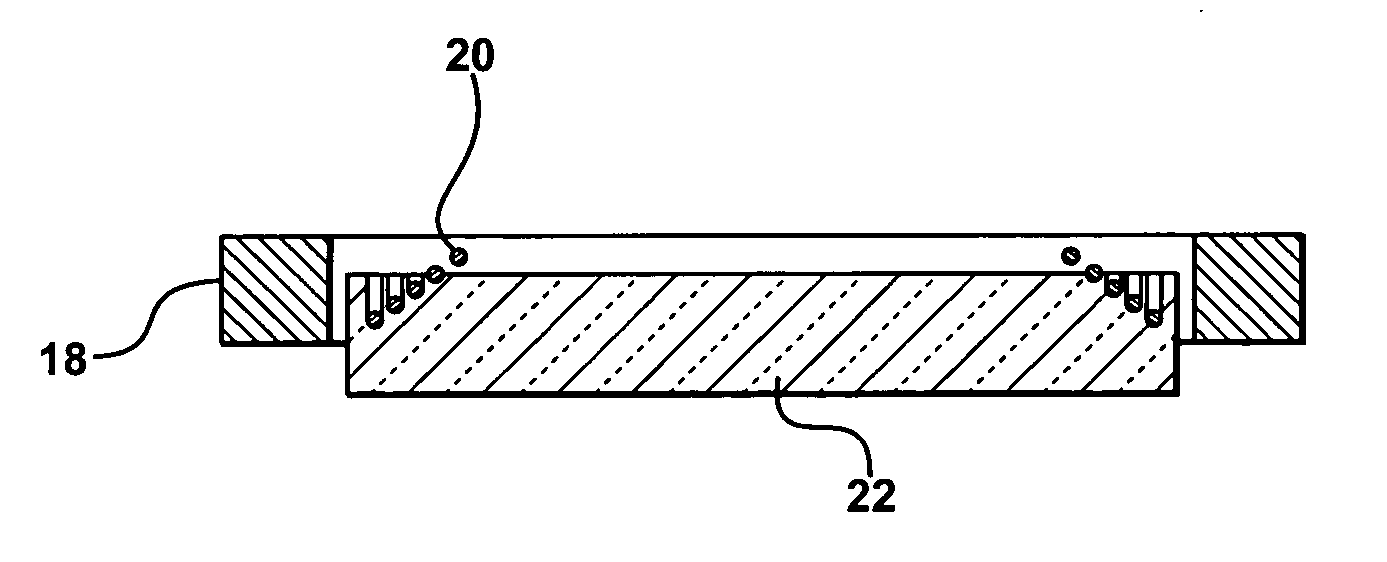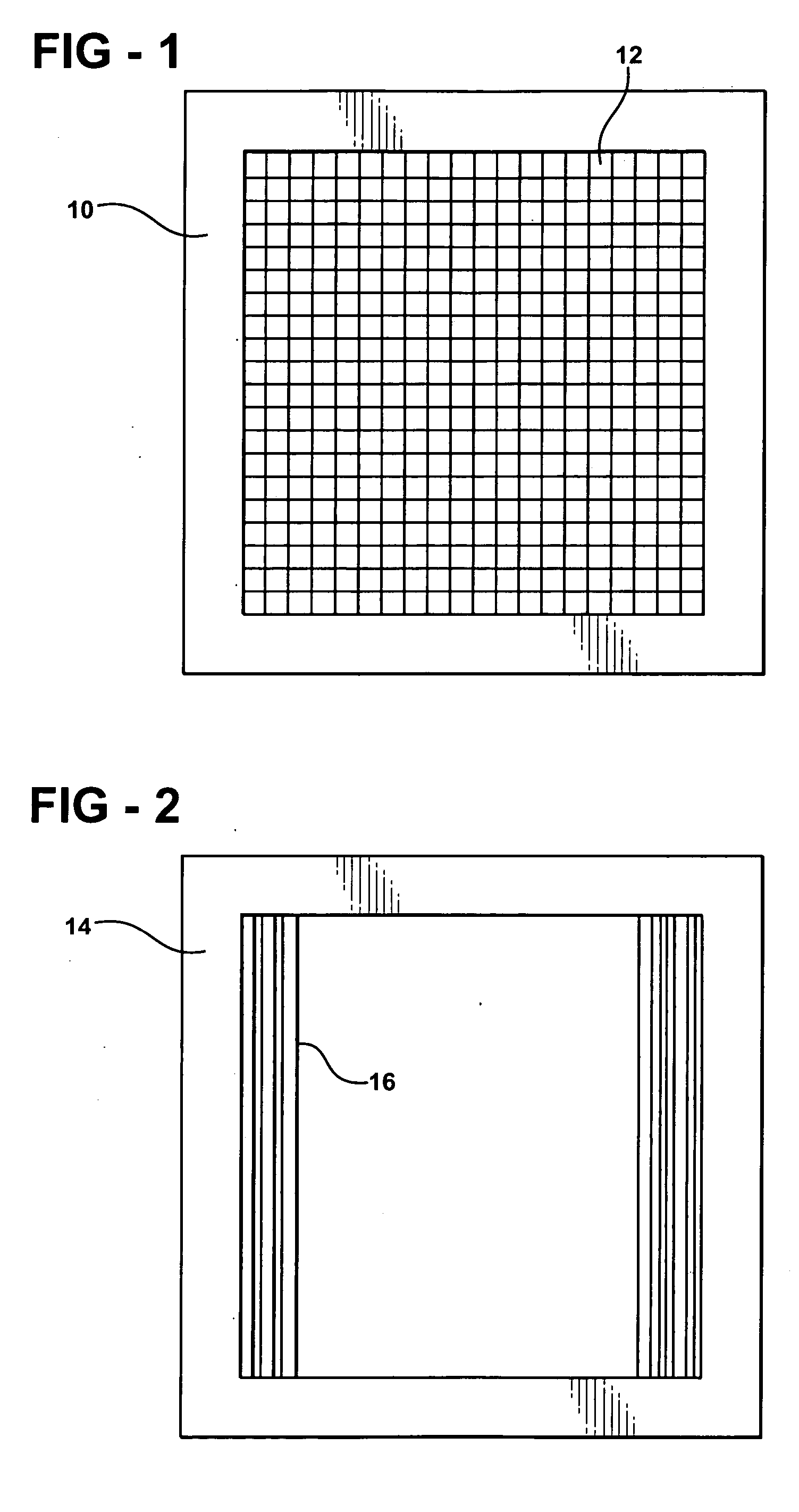Manufacturing method for pixilated crystal
a manufacturing method and crystal technology, applied in the field of improved apparatus and methods for shaping materials, can solve the problems of brittle or weak materials, dust, and the deformation of optical signals obtained from optical elements, and achieve the effect of improving the spatial resolution of scintillators
- Summary
- Abstract
- Description
- Claims
- Application Information
AI Technical Summary
Benefits of technology
Problems solved by technology
Method used
Image
Examples
Embodiment Construction
[0018] There are many reasons to modify the surface shape of a material. In the case of scintillators, internal edge reflections degrade the positional accuracy of detected scintillation light. This is described in more detail in my co-pending application, “Edge effects treatment for crystals”, U.S. patent application Ser. No. 10 / 993,012, filed Nov. 19, 2004. In this context, positional accuracy refers to the spatial relationship between the detected scintillation photons and actual scintillation events, and hence to the distribution of ionizing radiation incitement on the scintillator. Edge reflections allow scintillation light to take multiple paths out of the scintillator, namely a direct exit and internally reflected from an edge. Positional accuracy can be improved by a number of approaches, including dividing a single scintillator into multiple material segments, or by forming grooves in the surface of the scintillator. In particular, grooves formed in a peripheral region of t...
PUM
 Login to View More
Login to View More Abstract
Description
Claims
Application Information
 Login to View More
Login to View More - R&D
- Intellectual Property
- Life Sciences
- Materials
- Tech Scout
- Unparalleled Data Quality
- Higher Quality Content
- 60% Fewer Hallucinations
Browse by: Latest US Patents, China's latest patents, Technical Efficacy Thesaurus, Application Domain, Technology Topic, Popular Technical Reports.
© 2025 PatSnap. All rights reserved.Legal|Privacy policy|Modern Slavery Act Transparency Statement|Sitemap|About US| Contact US: help@patsnap.com



